🙌 Awesome, you're subscribed!
Thanks for subscribing! Look out for your first newsletter in your inbox soon!
Get us in your inbox
Sign up to our newsletter for the latest and greatest from your city and beyond
By entering your email address you agree to our Terms of Use and Privacy Policy and consent to receive emails from Time Out about news, events, offers and partner promotions.
Awesome, you're subscribed!
The best of Singapore for free.
Sign up for our email to enjoy Singapore without spending a thing (as well as some options when you’re feeling flush).
Déjà vu! We already have this email. Try another?
Love the mag?
Our newsletter hand-delivers the best bits to your inbox. Sign up to unlock our digital magazines and also receive the latest news, events, offers and partner promotions.
- Things to Do
- Food & Drink
- Shopping & Style
- Coca-Cola Foodmarks
- Music & Nightlife
- Restaurants & Cafes
- Los Angeles

- Things to do | Exhibitions

Changi Chapel and Museum

Time Out says
After three years since it was closed for a major redevelopment, Changi Chapel and Museum is finally reopening its doors on May 19. The museum is, arguably, the most iconic of World War II (WWII) sites in Singapore – never mind the fact that the museum is housed in a purpose-built venue, and the chapel is a reconstruction (the original was shipped to Australia after the war).
Following the update, the commemorative site features new content and artefacts showcased in an intimate and engaging format. History buffs can look forward to artefacts that complement those in other WWII sites such as the Former Ford Factory, and Reflections of Bukit Chandu which is set to reopen later this year.
At Changi Chapel and Museum, the main interest lies in the stories of industry and ingenuity within the Prisoners-of-War (POW) camps in Singapore. And with new multimedia offerings, you can uncover the lesser-known accounts of the internees, prison conditions back then, and legacies left behind by three and a half years of the Japanese Occupation through an enhanced immersive experience.
Other key highlights here include old favourites such as a section of the Changi Prison Wall, a Morse code device that was concealed in a matchbox used by POWs, and replicas of various biblical murals that were painted to provide spiritual solace during the war. If it all gets too much, the chapel, which is located in the courtyard of the museum, makes a good spot for some quiet reflection.
To welcome back visitors, the museum is hosting a digital reopening event via the museum’s official Facebook and YouTube pages on May 18 at 4pm. Tune in for interviews with families of former POWs who have contributed to the revamp, a curator’s highlights tour of the museum, and a tribute to the former POWs and civilian internees at Changi prison camp.
That's not all – you can also enjoy free admission from May 19 to 30. However, to better regulate the crowd and reduce waiting time, you are encouraged to pre-book your admission by timeslots online , and can do so for a maximum of two persons a week in advance. For more information, visit nhb.gov.sg/changichapelmuseum .
Been there, done that? Think again, my friend.
Discover Time Out original video
An email you'll actually love
- Press office
- Investor relations
- Work for Time Out
- Editorial guidelines
- Privacy notice
- Do not sell my information
- Cookie policy
- Accessibility statement
- Terms of use
- Modern slavery statement
- Manage cookies
- Sign up to newsletter
- Advertising
- Express Advertising
- Time Out Market
Time Out products
- Time Out Worldwide
Time Out magazine
- Print edition
- Digital edition

New Changi Chapel & Museum: Discover Stories Of Courage & Resilience
Share Article
A never-before-seen 400-page diary, a dinner menu, a toothbrush fashioned from scratch. These artefacts at the revamped Changi Chapel and Museum (CCM) will shed light on the riveting personal stories of prisoners of war (POWs) and civilians interned in Changi prison camp during the Japanese Occupation.

Closed in 2018 for a major redevelopment to enhance the museum’s infrastructure and content, CCM will reopen its doors on 19 May 2021. Featuring donations and community loans from families of the internees, the museum will showcase 114 artefacts across eight galleries delving into the daily lives of the internees, their responses to the challenges they faced, and their eventual liberation.

Chung May Khuen, Director of the National Museum of Singapore , said, “Changi Chapel and Museum is widely known for its sensitive portrayal of the personal stories of the POWs and civilian internees who lived under difficult conditions and circumstances. When the National Museum of Singapore took over the redevelopment and management of CCM, we were mindful to retain the focus on these personal accounts within an enhanced narrative and new displays that highlight the stories of Changi. I would like to thank the overseas museums and families of former internees for contributing the artefacts presented in the new CCM for the first time. Many of the personal artefacts contributed by the families are now part of Singapore’s National Collection and will allow us to continue to share their stories with future generations. Given the National Museum’s strong focus on the World War Two narrative, CCM’s refreshed content and offerings will not only complement the overall narrative as told in the National Museum’s World War Two galleries, but also those of other World War Two institutions in Singapore, including the Former Ford Factory and the revamped World War Two commemorative centre at Bukit Chandu which will reopen later this year. I hope that visitors will find that the new CCM continues to honour the internees and find inspiration through their stories of courage and resilience, especially during these challenging, uncertain times.”
New Changi Chapel & Museum – An Enhanced, Immersive Experience
Centred on a narrative of remembrance and reflection, the new CCM seeks to present an immersive experience that combines personal artefacts with new multimedia offerings to convey the stories and experiences of POWs and civilian internees in Changi during the Japanese Occupation in Singapore. The narrative is presented in eight exhibition zones:
1. Changi Fortress
This section introduces the history of Changi, which in the 19th century was largely covered by mangrove swamps and rainforests. In the 1920s, this quiet idyll began to change as the British started to construct batteries and barracks to protect Singapore from attack.

2. Fallen Fortress
This section covers the fall of Singapore as well as the fate that soldiers and civilians alike faced in the aftermath.
3. The Interned
Approximately 48,000 soldiers and civilians were marched to Changi, which was converted into a vast prison camp. This section spotlights the stories of the men, women, and children who were interned in Changi.
4. Life as POW
The day-to-day lives of those imprisoned in Changi are introduced in this section, along with remnants of the actual Changi Gaol.
5. Resilience in Adversity
This section offers a glimpse into both the hardships that the internees faced as well as how they responded to their situation.
6. Creativity in Adversity
Creative expression was deeply important to the internees, who found ways to write, draw, read, craft, play sports, and even stage concerts and plays. This section showcases their creative works.

7. Liberation
Japan surrendered on 15 August 1945, bringing an end to the three and a half years of the Japanese Occupation of Singapore. This section captures the internees’ feelings about their liberation as well as what happened immediately after the war.
8. Legacies
The legacy of Changi prison camp continues to live on in the present day. In this concluding section, visitors can look up the names and stories of the internees, and view some artefacts that were produced to remember how they had survived the internment.
In addition to the opportunity to view the personal artefacts up close, visitors will encounter a projection show that sets the context of CCM’s narrative with an introduction of the key milestones over the three-and-a-half year Japanese Occupation. Visitors can also step into a re-created Changi Gaol cell where the internees were housed to get a sense of the cramped living confines of the internees. The re-created cell includes historical recordings of conversations between the internees which offer a glimpse into their living conditions and daily experiences.

New Changi Chapel & Museum – Expanded Showcase Of War Histories & Lived Experiences
The new CCM will feature 82 artefacts and objects that are on display for the first time. During the revamp, NMS worked closely with members of the public and interest groups, including families of former internees, to collect stories and personal objects of the former internees. 37 of the new artefacts are donations and loans from the public, making up nearly one-third of the 114 artefacts on display.
These include a never-before-seen 400-page diary and a Kodak Baby Brownie camera, which were painstakingly hidden by some of the internees. The diary belonged to Mr Arthur Westrop, who wrote every entry as a letter to his wife, who was in Africa. The camera belonged to Sergeant John Ritchie Johnston and was given to him by his wife. Johnston managed to bring the camera with him to Changi and hid it from his captors during the entire period of his incarceration.

Other familiar and significant objects, such as a section of the Changi Wall, a Morse code device hidden in a matchbox that was used by internees to transmit messages,

and replicas of biblical murals painted to give internees spiritual comfort continue to be key highlights.

Building on existing databases including original camp registers and nominal rolls from Changi and Sime Road as well as the efforts of various individuals and interest groups such as historian Ronald Bridge who researches the history of POWs and civilian internees in Asia, The Changi Museum Pte Ltd (the company that managed CCM from 2001 to 2017) and the Children, Families and Friends of the Far East Prisoners of War (COFEPOW) network, the revamped CCM features a “living” database of over 50,000 POWs and civilian internees. Visitors can access specific, personal stories and are also welcome to contribute any memories they have of the internees to add to and preserve the legacies of those who passed through Changi’s gates.
New Changi Chapel & Museum – Improved Spaces & Facilities
In addition to the new artefacts and exhibits on display, the revamped CCM also boasts new features to enhance visitors’ experience. This includes a glass and timber canopy that has been constructed in the Chapel space. It is designed to provide visitors with some shade in the Chapel space while retaining the open-air atmosphere reminiscent of the original World War Two chapels which were typically built in the open during the Occupation.

For contactless ticketing and assistance, as well as additional museum content via mobile devices, visitors are encouraged to access the CCM chatbot for audio tours, exhibit captions in the four national languages and Japanese, and even virtual visits to nearby World War Two-related sites. The chatbot will be available on 17 May from 12 noon. From 19 May 2021, CCM will open Tuesdays to Sundays from 930am to 530pm, and admission is free for Singapore citizens and permanent residents.
Visitors can also purchase CCM publications and museum-inspired merchandise from the museum shop, and enjoy a meal at the museum’s F&B outlet, The Bark Café.
New Changi Chapel & Museum – Opening Programmes
To commemorate the reopening of CCM, all visitors will enjoy free admission from 19 to 30 May 2021. Guided tours of the gallery and a recorded orchestral performance based on the experiences of the POWs will be presented during its Opening Weekend on 22 and 23 May.
Visitors are encouraged to pre-book their museum admission tickets and sign up for the opening weekend programmes ahead of their visit from 17 May, 12 noon onwards. For more information, please visit www.changichapelmuseum.gov.sg or CCM’s Facebook and Instagram pages to book tickets or for more information on the museum.

Share this:
- Click to share on Twitter (Opens in new window)
- Click to share on Facebook (Opens in new window)
Related Posts

Best Vietnam Hotel Booking Site That Accepts Crypto

Treat Mom To A Memorable Mother’s Day Dining At Fat Cow

Burger Frites Singapore – Finger-licking Steak Burgers By A French Chef
Write a comment, leave a reply cancel reply.
Your email address will not be published. Required fields are marked *
This site uses Akismet to reduce spam. Learn how your comment data is processed .
Connect With Us

Home » Singapore » Visit Changi Chapel And Museum With Kids In Singapore
Visit Changi Chapel And Museum With Kids In Singapore
Revamped memorial site and exhibition.

Most people who have lived in Singapore would know that our garden city has come a long way from once being occupied by the Japanese during World War II. And to remember the past, there are many sites and landmarks in Singapore with cultural significance to visit.
One such landmark is Changi Chapel and Museum, tucked away in the far east of Changi. Newly revamped in May 2021, there are 8 galleries within that document the area’s early beginnings, and taking visitors through the war era through videos and interactive screens. There is even a recreated prison cell to show firsthand what it was like back then!
Those with an interest in history can also spend time observing the new artifacts collected and displayed in the museum. This can also be an educational journey for little ones, where they can get the chance to see rare items from yesteryears.
Once you’re done exploring the interiors, head outdoors to spend a quiet and pensive moment at the Chapel. Don’t leave without paying the museum shop and eatery, The Bark Café, a visit!
Why Little Steps Loves It:
Singapore has a rich cultural history. Sites like these will help educate and shed light on the past for both kids and adults.
Who It's Perfect For:
Families of all ages, and those who want to learn more about Singapore’s history.
What Else:
Entry is free for Singaporeans and PRs. Bookings are required for admission, with dates open 7 days in advance. Admission costs SG$8 for adults and SG$5 for seniors for tourists and foreigners. All kids 6 years old and below get free entry!
Where To Find It:
- Changi Chapel And Museum
- 1000 Upper Changi Rd N, Singapore 507707
- +65 6242 6033
- https://www.nhb.gov.sg/changichapelmuseum
Little Steps Asia knows what families need. Sign up for our email newsletters to get the most out of Asia!
Play:Date – Unlocking Cabinets of Play At National Museum Singapore
Cq furkids fiesta: pet adoptions, contests, and exclusive deals at clarke quay, join the ultimate pickleball and badminton festival in singapore – fun for all ages, paint with purpose and have some fun with art for good singapore, top family-friendly singapore events: june 2024 activities in singapore, join the hello kitty 50th run fest 2024 in singapore: ultimate family fun, mega despicable summer: universal studios singapore celebrates despicable me 4 release, bubble fiesta at adventure cove waterpark: singapore’s biggest bubble festival 2024, experience singapore’s hello kitty cable car cabins birthday bash: june-december 2024, discover the hottest june holiday and summer events in singapore 2024.

Private Hangout Space The Social Chamber Opens In Singapore

Sparkle Up Your Space: Top-Rated Part-Time Cleaning Services In Singapore For A Gleaming Home!

Experience The Best Luxury Coach Travel From Singapore To Malaysia
Singapore tips, deals + events..

Sign up for the Bump Club to get exclusive info + deals.
We know asia, weekly emails for bump club, travel and more.

Got kids? Little Steps Asia gives you the scoop on all the things to do and see with babies, toddlers, and kids in Hong Kong, Singapore, Kuala Lumpur, Bali, Jakarta, Macau, and beyond. From family-friendly hotels, kids and baby shops, the best schools and after school activities, pregnancy tips and meet-ups and more – we have you sorted.
FOLLOW US ON
Sign up to receive the free Little Steps email newsletter packed with news, offers, and hidden treasures for Singapore families.
© 2024 Little Steps Asia. All rights reserved.

RSVP for Visit Changi Chapel And Museum With Kids In Singapore
Government agencies communicate via .gov.sg websites (e.g. go.gov.sg/open) . Trusted website s
Look for a lock ( ) or https:// as an added precaution. Share sensitive information only on official, secure websites.
Meet Temi – your friendly museum guide who happens to be a robot
Mention museums and you’ll usually think of history, artifacts, and antiques.
But head down to Changi Chapel and Museum, and you’ll get a dose of cutting-edge technology. There, one of the museum guides moves around on wheels and welcomes you with audio and videos on a flat screen.
That’s right, Temi is a commercial robot that’s been programmed and trained as a tour guide for the museum featuring life as prisoners of war during World War II.
What’s Temi and what can it do?
Though petite, with height reaching the waist level of an average adult, Temi is fully equipped with the necessary intellect and wisdom to navigate and lead museum visitors through various exhibits entirely on its own.
It enhances the museum experience for visitors by narrating stories and playing video content that adds context to the physical exhibitions on display. All visitors have to do is register at the entrance and use the touchscreen on Temi to interact with the robot. As such, visitors can engage Temi at their convenience instead of waiting for scheduled tours by human guides.
How does Temi do what it does?
The project started when the National Heritage Board approached GovTech for solutions to complement its human tour guides. After considering several options, the team decided to build upon an existing, commercially available robot for its mechanical tour guide.
GovTech engineers developed a customised app to display the videos for visitor viewing. They also handled the mapping of the path that Temi would move in the museum. This involved detailing every waypoint in the tour route so that the robot could move autonomously.
The lidar sensor on Temi enables it to detect obstacles in the path so it doesn’t knock into other visitors or objects that are in its way. Contractors were also engaged to paste stickers on certain translucent glass doors so that Temi would be able to recognise the door as an object it should avoid.
Temi is also able to navigate back to the charging station when it is low on battery, so no human effort is needed to carry it back when the battery runs out.
Any special tricks up Temi’s sleeves?
Doors are not an issue for Temi! The robot can trigger signals to open automated sliding doors and keep them open while it passes through.
It can also automatically lower the volume of other exhibit videos that are playing near the robot. This is so that visitors can focus on the content that Temi is presenting. When Temi moves to another area, the volume of the exhibit videos will revert to the original level.
To enable these functions, the GovTech team had to retrofit Temi with some hardware known as DECADA Edge. The device acts as a gateway to control the opening of the glass doors and lower the volume of the sound system. This is done by relaying and transmitting messages from the robot, enabling it to communicate with other sensors.
What’s next for Temi?
Temi is deployed at Changi Chapel and Museum as a proof of concept. If the guide proves to be a hit with visitors, more of such robot guides will be deployed to other museums so that more## visitors can benefit from them.
There is also potential to further develop Temi’s ability to interact with other tech equipment. For example, it is possible to programme Temi to coordinate a fully synchronised visual and audio show by connecting it to different lighting, sound, and IoT systems. This will make for an immersive tour experience that engages visitors’ different senses.
Curious to find out more? Then head on down to Changi Chapel and Museum to meet your friendly robot guide!
- Bukit Brown Cemetery
- Former Communicable Disease Centre (CDC)
- Istana Woodneuk
- Keppel Hill Reservoir
- Lim Chu Kang Pier
- Neo Tiew Estate
- Old Changi Hospital
- Old Tan Tock Seng Hospital
- Sentosa Fort Serapong
- Siglap Blocks
- Tanglin Barracks
- Upper Thomson Secondary & Other Abandoned Schools
- View Road Mental Hospital
- Atbara House
- Capitol Theatre/Building
- Central Fire Station
- Changi Commando Barrack
- Customs Operations Command Building
- Ellison Building
- Esplanade Park
- Former Beach Road Police Station
- Former CID Headquarters
- Former National Aerated Water Company
- Former Sun Yat Sen Villa
- Jinrikisha Station
- Jurong West Nantah Arch
- Kampong Silat SIT Flats
- Karikal Mahal
- Marine Parade Sea Breeze Lodge
- Maxwell Chambers & Maxwell Chambers Suites
- Mount Sophia Tower House
- Nee Soon Post Office
- Old Kallang Airport
- Pasir Panjang Fort/Labrador Battery
- Pearl’s Hill Police Operational Headquarters
- Portsdown, Seletar & Sembawang Colonial Houses
- Punggol Matilda House
- Seletar Camp & Old Lamp Posts
- Sembawang Hot Spring
- Sentosa Blakang Mati Artillery Barrack
- Tanjong Pagar Railway Station
- Toa Payoh Dragon Playground
- Bukit Merah SAFRA Clubhouse
- Commonwealth Avenue Food Centre
- Dover Road Pelican Playground
- Former Paya Lebar Police Station
- Geylang Serai Malay Village
- Kallang National Stadium
- MacAlister Terrace
- Queenstown/Queensway Cinema
- Rochor Centre Coloured Flats
- Singapore En-Bloc Flats
- Singapore Railway
- Sungei Road Thieves’ Market
- Taman Jurong “H-Shaped” JTC Flats
- Tanglin Hill Brunei Hostel
- Woodlands Camps/Kranji Army Barracks
- Yan Kit Swimming Complex
- Zion Road Blue Flats
- Beach Road Army Market
- Bukit Purmei Keramat Bukit Kasita
- Bukit Timah Turf Club
- Dakota Crescent Provision Shop
- Ghim Moh Bus Terminal
- Haw Par Villa
- Jalan Bahar Dragon Kiln
- Japanese Cemetery Park
- Jurong Hill Observatory Tower
- Kampong Lorong Buangkok
- Lorong Chuan Overhead Bridge
- MacPherson Mamak Shop
- Marsiling Underpass
- Old Bus Stops/Street Name Signage
- People’s Park Complex
- Sembawang Hill Estate Taxi Service Stand
- Tiong Bahru Bird Singing Corner
- Upper Serangoon Shopping Centre
- Bukit Timah Nature Reserve
- Upper Seletar Reservoir
- Ang Mo Kio Merlions
- Hougang Rainbow Flat
- Katong Park Guard Sculptures
- Kim Keat Dinosaur Playground
- Simei Beauties’ Portraits
- Tuas Television World
- Whampoa Dragon Fountain
- Exploring the Marsiling Tunnels
- Exploring the Remnants of Kay Siang Bunkers
- Seah Im Road and the Mysterious Bunker
- The Lost Cause and Forgotten Ruins of Fort Serapong
- The Mystery of a Deserted Japanese Tomb at Mount Faber
- Coney Island and the Forgotten Haw Par Beach Villa
- Exploring the Forgotten Keppel Hill Reservoir
- View Road and its Forgotten Former Hospital
- Sago Lane’s Grim History of “Death Houses”
- Searching for the Remaining Old Flood Gauges in Singapore
- Jalan Benaan Kapal – A Forgotten Chapter in the History of Singapore’s Ship Repair Industry
- The History of Singapore’s Night Soil Bucket System
- The Old Gates at Jalan Selimang and the Legacy of the Former Cycle & Carriage Chairman
- From Old Woodlands to New
- A Short History of Tampines Road – Busy Junction, Customs Station and Illegal Alcohol
- Toa Payoh Rise’s Past and Present
- A Brief Jewish History in Singapore
- Flashback 30 Years Ago… Singapore in 1986
- “Hello, Hello” The Rise and Decline of Singapore’s Public Payphones
- Mata.Mata : History of The Singapore Police
- Haze – A Burning Issue For Four Decades
- You’ve Got Mail… Singapore’s Former/Old Post Offices
- 4D, Mahjong and Chap Ji Kee .. History of Gambling in Singapore
- Burgers, French Fries and Diet Coke
- Rejuvenation of the Old Ang Mo Kio Swimming Complex
- 50 Years of Toa Payoh Swimming Complex and Stadium
- Jurong Stadium Gone Under the Wrecking Ball
- Closure and Demolition of Bedok Swimming Complex
- The World Cup Craze and Memories
- Swimming in the Summer Sun of Singapore
- Generations of Local Football Heroes
- Redhill Close SIT Estate Walks Into History
- The End of Singapore’s First HDB Flats at Merpati Road
- The Last Days of Kampong Lorong Fatimah
- Farewell to Old Tanglin Halt
- Whampoa’s Majestic Long Curved HDB Block
- Changes of Dakota 2 – Bidding Farewell to Dakota Crescent Flats
- The Colonial Bungalows and “Country” Roads at Sembawang
- The Hauntingly Beautiful Terrace Houses of Petain Road
- From Nee Soon Village to Springleaf Park
- The Lone HDB Block at Moulmein
- End of Era for Normanton Park, and other HUDC Estates
- Boon Lay, JTC and the En-Bloc Flats
- Tales of Kampongs at Old Upper Thomson Road
- From Villages to Flats (Part 3) – The Traditional Shophouses
- Pachitan – A Vanished Javanese Name in Singapore
- The Last of Singapore’s Rural Centres
- Bidding Farewell to Siglap’s Last Standing Flats
- Paintings in the Sky – Unique HDB Murals
- From Villages to Flats (Part 2) – Public Housing in Singapore
- From Villages to Flats (Part 1) – The Kampong Days
- Grand Mansions, Bungalows and Villas of the Past
- Landmarks of Yesteryears – Tang Dynasty City
- Landmarks of Yesteryears – Amber Mansions
- Landmarks of Yesteryears – Times House at Kim Seng Road
- Vanishing Memories – A Golden Palace at Tampines
- Prominent Singapore Landmarks that should be Conserved
- “Little Thailand” No More… Rejuvenation of Golden Mile Complex
- Memories of the Jurong Bird Park
- Kranji Industrial Estate and its Little Enclave of Eateries and Shophouses
- Cool but Obsolete… Gadgets and Apps of the 1990s and 2000s
- Reminiscences of the Old Lam Soon Community Centre
- A Brief Past of Ridout Tea Garden and its Popular McDonald’s
- Reminiscing the Days of Steamboats, Bowling and Arcade at Marina South
- Looking for Bits and Pieces of Old Seletar
- Walking Down the Memory Lane of Margaret Drive
- Reminiscences of the Old Beauty World
- The Idyllic Days of Changi Creek and Villages
- Bras Basah Complex, Singapore’s City of Books
- Tuas of Yesteryears – A Fishing Village and Seafood Restaurants
- From Hock Lam’s Beef Noodles to Funan’s Computers
- Traditional Provision Shops – Can They Stand the Test of Time?
- Enter a World of Advertisement in Old Singapore (Part 1)
- A Different Chinese New Year Celebration
- 100 Things We Love About The 80s (Part 2)
- 100 Things We Love About The 80s
- Singapore Trivia – Time Adjustment for Singapore in 1982
- Singapore Trivia – A Lone Kampong House at Mandai
- Singapore Trivia – The Red Junglefowl of Singapore
- Singapore Trivia – Old Dragons of Whampoa and Toa Payoh
- Singapore Trivia – The Tree of One Tree Hill
- Singapore Trivia – A TV World at Tuas
- Singapore Trivia – The Tembusu Tree and 5-Dollar Note
- Singapore Trivia – When a Tree’s Not a Tree
- Singapore Trivia – The Firsts and Lasts (in Everyday Life)
- Nantah’s Sundial, a Time-Telling Relic Lost in Time
- A Forgotten Past – The Noah’s Ark of Pasir Panjang
- The Red Butterfly – Girl Terrors of the Sixties
- A Singapura Mystery – The Queenstown Shooting 1972
- A Forgotten Past – A Bank Run Incident in Singapore
- A Forgotten Past – Two Decades of Chaos
- A Forgotten Past – ‘Prison on Fire’ at Pulau Senang
- A Forgotten Past – The Curious Case of Lim Yew Hock
- A Forgotten Past – The Prisoners of Conscience
- A Forgotten Past – A Zoo at Punggol
- A Forgotten Past – The Last Royal Palace of Singapore
- A Forgotten Past – The Days When Singapore Mafia Ruled Europe
- A Forgotten Past – Vietnamese Boat People in Singapore
- Singapore’s Heritage Tree Series – Terap
- Singapore’s Heritage Tree Series – Purple Millettia
- Singapore’s Heritage Tree Series – Broad-Leafed Mahogany
- Emerald Hill – A Gem at Orchard
- The Colourful Landmark of Selegie Arts Centre
- The Restored Beauty of Winsland House II
- Enter a World of Advertisement in Old Singapore (Part 2)
- From Old Cemetery to Vibrant New Town; A Peck San Theng Heritage Gallery
- Singapore Monuments in Lego @National Library
- A Little History along the Kallang River
- “50 Made in Singapore Products” Exhibition at the National Museum of Singapore
- SCDF Heritage Gallery – Singapore’s Firefighting History
- The Small Quiet HDB Estate of Lorong Lew Lian
- The End of Lorong 3 Geylang Neighbourhood
- Teachers’ Housing Estate – Then and Now
- The Charms of Wessex Estate’s Black and White Houses
- A Final Look at the Old Woodlands Town Centre
- McNair Road, Townerville and the Kwong Wai Shiu Hospital
- The Old World Charm of Mountbatten
- SIT Apartments, Old Schools and a Famous Hawker Centre at Monk’s Hill
- The Cambridge Estate – An “English” Estate in Singapore
- The Forgotten Diamond of Taman Jurong
- Tanglin Halt – Where the Trains used to Pass by
- Ang Mo Kio, My Hometown of 25 years
- Memories of the Old Clementi Town Centre
- A Walk Through The Old Neighbourhood – Old Woodlands Town Centre
- A Walk Through The Old Neighbourhood – Serangoon Gardens
- A Walk Through The Old Neighbourhood – Redhill Close
- A Walk Through The Old Neighbourhood – Jalan Kayu
- A Walk Through The Old Neighbourhood – Tiong Bahru
- Remnants of Singapore’s Lost Roads – Boh Sua Tian Road
- Coming to the End of Jurong Road
- The Disappearance of the Historic Ellenborough Street
- Remnants of Singapore’s Lost Roads – Tiverton Lane
- Retracing the 26 Tracks of Punggol Road
- Closure (Partial) of Tanglin Halt Close
- The Disappearance of the Historic Hallpike Street
- Remnants of Singapore’s Lost Roads – Kuala Loyang Road
- Remnants of Singapore’s Lost Roads – Lorong Bistari
- The Forgotten Former Schools at Parry Avenue
- The Fate of Old New Town Secondary School
- First Toa Payoh Secondary School No More
- The Old Singapore Polytechnic Campus and New Prince Edward MRT Station
- Changes of Dakota – Demolition of Former Broadrick and Maju Secondary Schools
- The Forgotten Former Schools at Pasir Panjang
- Old School National Day’s Memorabilia
- The Former Changkat Changi Schools at Changi Road 10th Milestone
- 15 Defunct Department Stores We Miss the Most
- Shining and Guiding the Way… The Lighthouses of Singapore
- A Tale of Towers and Pagodas
- Sloane Court Hotel and other Former Hotels of Singapore
- The Heritage Bridges – Singapore River’s Grand Old Dames
- Singapore’s Iconic Fountains of Dreams
- 60 Years of Community Centres
- A Tale of Jetties and Piers
- Time Stands Still at Singapore’s Veteran Shopping Malls
- A Pictorial Gallery of Bronze Sculptures in Singapore
- Headlines that shook Singapore (since 1955)
- The Story of “The Cattle King” and his Karikal Mahal Palace
- A Siglap Tale of Kee Sun Avenue and Seaside Villa
- The “King” of Bedok, Villa Haji Kahar and the Bedok Rest House
- The Legend of a German Deity at Ubin
- Back Then When Jurong’s Drive-In Cinema Was All The Rage
- Memories of Bedok’s Princess
- Broadcasts, Dramas and Dreams… Caldecott Hill in 80 Years
- A Last Look at Pearls Centre and its Yangtze Theatre
- 20 Most Memorable SBC (Channel 8) Dramas of the 1980s
- A Century of Cinemas, Movies and Blockbusters
- Rediffusion And Its Glorious 63 Years
- From Black & White to Colour…
- Spirit of Radio Remains Strong After 75 Years
- End of the Road for Trishaws in Singapore
- 100 Years of the Causeway
- The Evolution of Singapore’s Street Lighting
- 10 Types of Vehicles that Had Disappeared from the Streets of Singapore
- The Beginning of Singapore’s Expressways
- Vroom Vroom… Looking Back at the Old Singapore Grand Prix
- Farewell to the Former Queenstown Driving Test Centre
- Goodbye, Old Yishun Bus Interchange
- Taxi! Taxi! The Evolution of Singapore’s Taxi-Cabs
- A Journey into Singapore MRT’s Past
- Those Years When We Waited For Our Buses Together
- Taking an Old Bus Ride
- First Multi-Storey Carpark of Singapore Walks into History
- Singapore’s Oldest Petrol Kiosk Winds up Business
- Doors Shuttered for Good for Peace Centre
- Alexandra Post Office Walks Into History
- Demolition of Old Boys’ Brigade Headquarters
- Goodbye to the Iconic Landmarks of Shaw Tower and Liang Court
- Goodbye Sentosa Merlion
- The Architectural Legacy of Pearl Bank Apartments
- The Vanished Colourful Landmark of Rochor
- Gone Were the East Coast Park Chalets
- Goodbye Kampong Java Park
- Sungei Road Thieves’ Market – From Beginning to End
- Distant Memories of the Big Splash
- A Final Farewell to the Good Ol’ Underwater World
- Lakeview Estate, its Former Market and the “Shopping Centre”
- Transit Road – A Transition from Retro Shops to New Condos
- Searching for Singapore’s Last Water Wells
- The Last of the Street Barbers in Singapore
- Searching for the Remnants of Ama Keng
- 30 Years of Memories at Marine Cove McDonald’s
- The Sky Changes at Potong Pasir
- Goodbye, Copthorne Orchid Hotel
- A Last Look at Turf City
- A Vanishing “Countryside” of Horse Stables and Lush Greenery
- The Vanished Pasir Ris Farmways and Pet Farms
- Redevelopment of the Rustic Bah Soon Pah Road
- Sembawang Hot Spring’s Long-Awaited Rejuvenation
- Memories of Ah Meng, Inuka and Other Singapore’s Favourite Animal Stars
- Little Guilin and the Former Granite Quarries of Singapore
- The Last Fish Farm at Seletar West Farmway 4 Closes
- The Clock is Ticking on Singapore’s Last Village
- A Southern Islands’ Tour – Kusu, St John’s and Lazarus
- When the Durians Fall at Pulau Ubin
- The Remaining Farmways at Seletar-Punggol
- The Story of a Crocodile Farm at Upper Serangoon Road
- The Last “Fishing Village” in Singapore
- Fish Farms at Seletar West Farmways to be Relocated?
- The “Black Bridge” of Orh Kio Tau
- The Legacies Queen Elizabeth II Left in Singapore
- Kay Poh Road… A Busybody Road?
- Understanding Singapore’s Different Types of Street Suffixes
- Roads Named after Cargo Boats, and the Vanished Charcoal/Firewood Trade at Tanjong Rhu
- Singapore’s Grandfathers’ Roads – Legacies of Our Pioneers
- Compassvale Ancilla and Mang Kah Kar
- 10 Common Misconceptions of the Names of Places in Singapore
- Interesting Singapore Road Names
- Old, Common Names of Places in Singapore, and their Origins
- The Camps Along Sembawang Road (Part 1) – Khatib Camp
- The Past of Pasir Laba… Countryside Road, WW2 Fort and Army Camp
- Changes of Dakota 3 – Guillemard Camp Walks into History
- Army Camp, Lifestyle Enclave, Visual Arts Hub… Gillman Barracks’ Journey in the Past Decades
- Once in Our Life, Two Years of Our Time
- The Former Maritime House and its Old-School Hainanese Western Food Restaurant
- Have a Break, Have a Kacang Puteh
- Goodbye to the old Golden Shoe Hawker Centre
- Have a Cup of Kopi …. with Butter
- Last Breakfast at Tong Ah Kopitiam
- Sipping Teh at a Kampong Kopitiam
- Singapore’s Vanished Markets and Hawker Centres
- The Disappearing Chee Pow Kai and Hum Chim Peng
- End of the Road for the Golden Bridge
- Singapore Kopitiam Culture
- The Mosque of Paradise and Street of Worship at Old Choa Chu Kang Road
- An Old Riverine Temple at Sungei Kallang
- The Remaking of Jalan Kayu’s Church of The Epiphany
- A Thousand Buddhas at Telok Blangah Hill
- A Historical Brief of Balestier’s Red Chinese Temple and Wayang
- Sembawang’s Kampong Mosque and Former Coastal Villages
- Singapore’s Street of Religious Harmony (Part 2) – Waterloo Street
- Singapore’s Street of Religious Harmony (Part 1) – Telok Ayer Street
- The Former St Matthew’s Church and its Kindergarten at Neil Road
- A Temple’s Journey From Tekong to Mainland Singapore
- The WWII Stories of Changi Chapel, Cross and Murals
- 1942 Singapore’s Darkest Moment at Former Ford Factory
- Adam Park and its WWII Past
- A Military History of Singapore’s Pillboxes
- 15 February Commemoration and the Civilian War Memorial
- Exploring the Ruins of Syonan Jinja at MacRitchie Reservoir
- 15 February – A Trip to The Bukit Batok Memorial
- The Sarimbun Beach Landing and Jalan Bahtera
- The Singapore General Hospital War Memorial – A Tragedy Seventy Years Ago
- Heritage Tour around Colonial Changi
- A Visit to Reflections at Bukit Chandu
- The Forgotten WWII Tomb Memorial at Choa Chu Kang Cemetery
- The Old Forgotten Tombstone of Jane Buyers at Lower Seletar Reservoir
- Past and Present Cemeteries of Singapore (Part 2) – Malay/Muslim Burial Grounds
- Past and Present Cemeteries of Singapore (Part 1) – Old Chinese Graveyards
- A Different Sanctuary at Mount Vernon
- There was Once a “Cut Stomach Open” Street off Yio Chu Kang Road
- Old Holland Road and The Hakka Clan
- Creative and Unique National Day Parade Floats Procession Through the Years
- Singapore Bicentennial 2019 – A Note to Remember
- Singapore Bicentennial 2019 – The Arrivals and Their Contributions
- SG50 – A Glance at Singapore in the Past 50 Years
- Those Favourite National Day Songs We Once Sang
- The Once Mysterious Bedok and Woodlands Flats
- Hillview Mansion, its Remnants and Legendary Tales
- Moths, Durians and Other Local Old Wives’ Tales
- Pasir Ris Red House… A Haunting Legend No More
- Singapore’s Most Enduring Ghost Stories
- 10 Legends and Myths of Singapore
- 10 Most Popular Singapore Urban Legends
- Top Ten ‘Haunted’ Places in Singapore
- Nostalgic Coloured Photos of Former Chong Pang Village
- Nostalgic Coloured Photos of Former Seng Poh Road Market
- A Flashback to Singapore 1982 Through Old Geography Textbooks (Part 2)
- A Flashback to Singapore 1982 Through Old Geography Textbooks (Part 1)
- Nostalgic Coloured Photos of Lim Tua Tow Market
- A Pictorial Gallery of Singapore in 1980
- Jalan-Jalan in Singapore, 1980 Version
- Bird Singing, a Favourite Pastime of the Past
- Then and Now, The Public Holidays of Singapore
- Gongs, Long Hair and Chewing Gums
- Singapore Music – The Rise and Decline of Local Bands
- Kampong Spirit and Gotong Royong
Singapore Campaigns of the 70s/80s
- Our Xinyao , Our Songs
- Singapore’s Favourite Mascots.. How Many Do You Remember?
- Best of Singlish Words and Phrases
- Vanishing Local Street Vendors?
- Changes in the City – Afro-Asia Building
- Raffles Place, 50 Years of Transformation
- Printing and Minting: The Singapore Dollars and Coins
- Money Never Sleeps – A Brief History of Banking in Singapore
- Vanished Traditional Teochew Games
- Our Favourite Games of Yesteryears
- Those Years When We Played Arcade Games Together
- A Dragon Quest – Searching for Singapore’s Lost Dragon Playgrounds
- “Rediscovering” My Childhood Toys
Our Favourite Playgrounds of Yesteryears
- Remembrance of Othman Wok (1924-2017), Singapore’s First Malay Minister
- Remembering Ong Teng Cheong (1936-2002), the People’s President
- S.R. Nathan (1924-2016) – President, Diplomat, Crisis Leader
- Remembering Lee Kuan Yew, the Founding Father of Singapore (1923-2015)
- The Grandfather of Singapore Sculpture and his Joo Chiat Studio
- The Emporium Legend Lim Tow Yong (1925-2012)
- A Persistent Opposition J. B. Jeyaretnam (1926-2008)
- Tribute to Dr Toh Chin Chye (1921-2012)
- Tribute to Singapore’s Mother Teresa (1898 -2011)
- Gunung Pulai and its Links to Singapore
- Changi’s Last Landmarks
- Singapore 1972
- A Match Made in Singapore
- (10th Year Edition) A Look Back at What Vanished in Singapore in the Past Decade
- Everchanging Singapore
The WWII Stories of Changi Chapel, Cross and Murals

The Changi Chapel and Museum is one of the war museums in Singapore, telling stories of the harsh and difficult days of the prisoners-of-war (POWs) during the Japanese Occupation.
When Singapore fell to the Japanese in 1942, tens of thousands of British and Australian troops were held at the internment camp at Changi. It also detained, beside the military personnel, the Eurasians and civilians related to the British. Many POWs were later sent to Japanese-occupied territories at Thailand, Manchuria and Taiwan for hard labour, and only some managed to survive and return. It was estimated that throughout the occupation, as many as 90,000 passed through the Changi internment camp.
Changi Chapel

The Changi Chapel is modelled after the St George’s Chapel, one of the small churches built by the POWs during their internment at Changi. It was started by Reverend Eric Cordingly (1911-1976), who was an army chaplain deployed to Singapore in early 1942. Just a few days after his arrival, the British surrendered Singapore to the Japanese.
Eric Cordingly was interned as a POW together with other British and Australian soldiers until the end of war in 1945. The poor living conditions, malnutrition and ill treatment by the Japanese guards saw many POWs perished in the internment camp. Accordingly to Eric Cordingly’s burial returns book, he buried more than 600 comrades during his times as a POW. He officiated as many as five to six burials a week in the month of May in 1942.

Despite the inhumane treatment, the Japanese did not really restrict the POWs’ religious activities in the camp. Hence, Eric Cordingly and the other POWs decided to establish a chapel. According to the archives, there were four versions of the St George’s Church built during the war. The first was housed at a former mosque used by the Indian soldiers of the British Army, who gave Eric Cordingly permission to use it. He would conducted the church’s first service on 22 February 1942.
When the POWs were sent by the Japanese to work on the notorious Thai-Burma’s Death Railway, they also built a similar small chapel – the second St George’s Church – at Kanchanaburi. Those who had survived and returned to Singapore, built two more St George’s Churches at Changi Gaol. For all three versions of St George’s Church, the POWs painstakingly savaged all the scrap materials they could find to build the chapels and their altars and furniture.

Throughout the war, the various St George’s Chapels provided comfort and relief to the POWs, giving them the will and hope to live on.
Changi Cross
After the first St George ‘s Chapel was established, Eric Cordingly designed a cross and asked his fellow POWs to make it for the chapel’s altar. One of the POWs, Staff Sergeant Harry Stogden, was able to construct the cross at the prison workshop using a brass howitzer shell case . Another POW Tim Hemmings used an old umbrella stem to engrave their regiments’ badges on the cross. It became known as the Changi Cross. By the sides of the cross was a pair of pewter candlesticks. After the war, Eric Cordingly brought the cross back to Cheltenham.

The idea of a Changi Chapel museum began in 1953 at the Changi Prison, where one of its hospital wards was converted into a chapel. But as the visits to the chapel grew, it caused inconvenience to the prison’s operations.
Hence, in 1988, Singapore decided to build a replica chapel next to the Changi Prison, where a small museum was also set up. The Changi Chapel and Museum served as the site of remembrance for the visitors and former POWs to commemorate the history and significance of the St George’s Church during the Second World War.

In the late 1990s, due to the expansion of the Changi Prison, the replica chapel was relocated to its current location along Upper Changi Road North. On 15 February 2001, 59 years after the Fall of Singapore, the Changi Chapel and Museum was officially opened.
On the altar of the replica chapel displays the original Changi Cross, which was loaned by the Cordingly family since 1992.

During the Japanese Occupation, other than St George’s Church, the POWs and civilian internees at Changi also set up several other places of worship, such as the St Luke’s Chapel, Our Lady of Christians Roman Catholic Chapel, St Paul’s Church and the Synagogue of Ohel Jacob. Only St Luke’s Chapel and Our Lady of Christians Roman Catholic Chapel survived till this day.
Our Lady of Christians Roman Catholic Chapel was built by Australian POWs in 1944. After the war, the church was dismantled and shipped to Australia. In 1988, the original building was reassembled at the Royal Military College in Duntroon to serve as the poignant memorial to the 35,000 former Australian POWs.
Changi Murals
St Luke’s Chapel was housed at the former Roberts Barrack’s (present-day Changi Air Base West) Block 151. It was where former POW Stanley Warren (1917-1992) painted his famous Changi Murals . Between 1942 and 1943, a very sick Stanley Warren, inspired by his pastor, comrades as well as his faith, carried out and completed the Christian-theme works.
With scarce resources available, Stanley Warren managed to paint a total of five wall murals. He eventually survived the war and returned to England. Roberts Barracks was returned to the British artillery who then transferred it to the Royal Air Force (RAF) in 1947. One popular version of the story on how the murals were “rediscovered” was that one of the servicemen, in the fifties, found the murals hidden under the distemper paint applied by the Japanese. Under much persuasion by the RAF, Stanley Warren returned to Singapore in 1963 to help restore the murals. He would return to Singapore two more times, in 1982 and 1988, for the restoration works at the former chapel which had became a part of the Changi Air Base premises.
As the location of the original Changi Murals is restricted to public access, the Changi Chapel and Museum showcases the replicas of Stanley Warren’s murals for visitors to appreciate his priceless works of significant historical values. ( Refer to Heritage Tour around Colonial Changi for the original Changi Murals)

Changi Gaol
Built in 1936, the former Changi Gaol was designed to accommodate up to 600 prisoners. When Singapore fell in 1942, the Japanese used it to detain the civilians and families of the British and Australian troops. 3,248 internees were packed into the prison for more than two years. Out of these internees, 2,598 were men, 408 were women and the rest were children.
The filth and misery inside the gaol was indescribable. It was infested with bed bugs and cockroaches, and the latrine buckets and garbage tins were used for cooking and the distribution of food. Hunger, diseases, tortures and deaths became daily affairs at Changi Gaol.
The Changi Chapel and Museum displays an original prison door of Changi Gaol. It was part of a prison cell meant for a single occupant. Such doors had eye-level and knee-level spyholes for the guards to observe the prisoners. During the war, four internees, sometimes up to eight, were crammed into the cell. There were no beddings, so the internees typically slept on the bare concretes inside the cells.

The Japanese guards would use a muster gong to gather the internees for parades and headcounts. This roll call was known as tenko in Japanese, and was instituted in November 1942 at the Changi internment camp. By 1944, as many as 10,000 internees were packed into Changi Gaol, almost 16 times its intended capacity.

The Changi Chapel and Museum opens from Tuesdays to Sundays between 9:30am and 5:30pm, closing every Monday except Public Holidays.
Published: 2 October 2022
Updated: 6 October 2022
Share this Article:

- Share on Tumblr
2 Responses to The WWII Stories of Changi Chapel, Cross and Murals
One can buy Changi Murals postcards and a fantastic book about Stanley Warren’s story (by Peter Stubbs) at the Changi Chapel and Museum.

Thank you for reviving this history!
Leave a comment Cancel reply
- Search for:
10 Most Recent Articles
- End of the Road for Trishaws in Singapore May 11, 2024
- Exploring the Marsiling Tunnels April 24, 2024
- Sago Lane’s Grim History of “Death Houses” March 26, 2024
- Doors Shuttered for Good for Peace Centre February 27, 2024
- A Last Look at Turf City January 14, 2024
- Rejuvenation of the Old Ang Mo Kio Swimming Complex December 21, 2023
- 50 Years of Toa Payoh Swimming Complex and Stadium November 19, 2023
- Redhill Close SIT Estate Walks Into History October 21, 2023
- The End of Singapore’s First HDB Flats at Merpati Road September 29, 2023
- The “Black Bridge” of Orh Kio Tau September 19, 2023
Archive of Articles
100 things we love about the 80s.

From Kampongs to Flats

Old Places in Singapore
- Ang Mo Kio Merlions
- Beach Road Army Market
- Bukit Merah SAFRA Clubhouse
- Bukit Purmei Keramat Bukit Kasita
- Bukit Timah Nature Reserve
- Bukit Timah Turf Club
- Commonwealth Avenue Food Centre
- Customs Operations Command Building
- Dakota Crescent Provision Shop
- Dover Road Pelican Playground
- Former Beach Road Police Station
- Former Communicable Disease Centre (CDC)
- Former National Aerated Water Company
- Former Paya Lebar Police Station
- Former Sun Yat Sen Villa
- Geylang Serai Malay Village
- Ghim Moh Bus Terminal
- Jalan Bahar Dragon Kiln
- Jurong Hill Observatory Tower
- Jurong West Nantah Arch
- Kampong Silat SIT Flats
- Katong Park Guard Sculptures
- Kim Keat Dinosaur Playground
- Lim Chu Kang Pier
- Lorong Chuan Overhead Bridge
- Marine Parade Sea Breeze Lodge
- Maxwell Chambers & Maxwell Chambers Suites
- Mount Sophia Tower House
- Nee Soon Post Office
- Old Bus Stops/Street Name Signage
- Old Tan Tock Seng Hospital
- Pasir Panjang Fort/Labrador Battery
- Pearl’s Hill Police Operational Headquarters
- People’s Park Complex
- Portsdown, Seletar & Sembawang Colonial Houses
- Rochor Centre Coloured Flats
- Seletar Camp & Old Lamp Posts
- Sembawang Hill Estate Taxi Service Stand
- Sentosa Blakang Mati Artillery Barrack
- Simei Beauties’ Portraits
- Sungei Road Thieves’ Market
- Taman Jurong “H-Shaped” JTC Flats
- Tanglin Hill Brunei Hostel
- Tanjong Pagar Railway Station
- Tiong Bahru Bird Singing Corner
- Toa Payoh Dragon Playground
- Upper Serangoon Shopping Centre
- Upper Thomson Secondary & Other Abandoned Schools
- View Road Mental Hospital
- Woodlands Camps/Kranji Army Barracks
- Yan Kit Swimming Complex
- Zion Road Blue Flats
Guest Articles
- Changi's Last Landmarks
Singapore Photo Gallery
This slideshow requires JavaScript.
- Singapore Heritage Society

The Singapore Bicentennial


Our SG Heritage

Fellow Nostalgia Websites
- A Boys Towner
- Beneath Bukit Brown
- Blog To Express
- From Dusk to Dawn
- Good Morning Yesterday
- Growing Up In Geylang
- Historic Chinese Architecture in Singapore
- History of Singapore Pioneers
- irememberSG
- Memories of Singapore
- My Queenstown
- Nostalgic Malls
- Odds & Ends of South East Asian Banknotes & Coins
- One-North Explorers
- Our Stories, Singapura Stories
- Overseas Chinese in the British Empire
- Places – Singapore or overseas
- Princess Elizabeth Estate
- re-LIVING RIVER 柴船头 (Cha Chun Tau)
- Rojak Librarian
- Save Bukit Brown Cemetery
- Second Shot
- SG School Memories
- SGHistoricity
- Singapore Film Hunter
- Singapore Through The Ages
- State of Buildings
- The Long and Winding Road
- Times of My Life
- Woon Family Portal
- Yesterday.sg
- 博物馆华文义工:研习坊
- 人生舞台 Early SBC Dramas
- 14,020,377 hits

- Already have a WordPress.com account? Log in now.
- Subscribe Subscribed
- Copy shortlink
- Report this content
- View post in Reader
- Manage subscriptions
- Collapse this bar
- Privacy & Cookies: This site uses cookies. By continuing to use this website, you agree to their use. To find out more, including how to control cookies, see here: Cookie Policy
Government agencies communicate via .gov.sg websites (e.g. go.gov.sg/open). Trusted websites
- Visitor Information
- Guided Tours
- Accessibility
- Museum Etiquette
- Shop & Dine
- Media Request
- Artefact Highlights
- Contribute a Story or Photograph
- Donate an Artefact
- Research and Publications
- School Visits & Programmes
- Give to the Museum
- Museum Host
- Docent Training
- The Building
- Our World War Two Story
- Media Releases
- Curator Tour
Curator Tour: Livestream
Click here to watch the livestream now
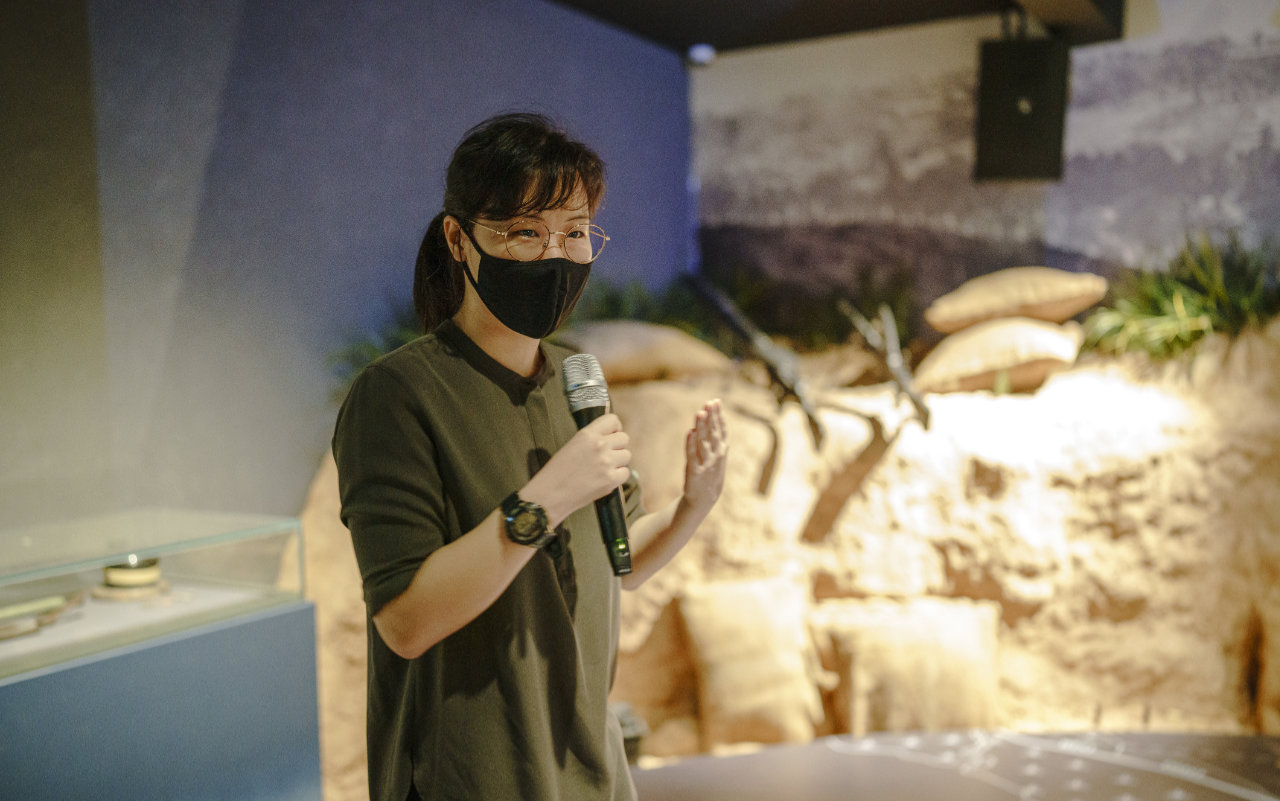
Get the latest from National Heritage Board
- Destinations
- Travel Tips
- Travel With Us
- Paid Travel Internship
- TTIFridays (Community Events)
- SG Travel Insider (Telegram Grp)

- SG Things To Do
Changi Neighbourhood Guide — 11 Things to do in the East Besides Visiting Jewel Changi Airport
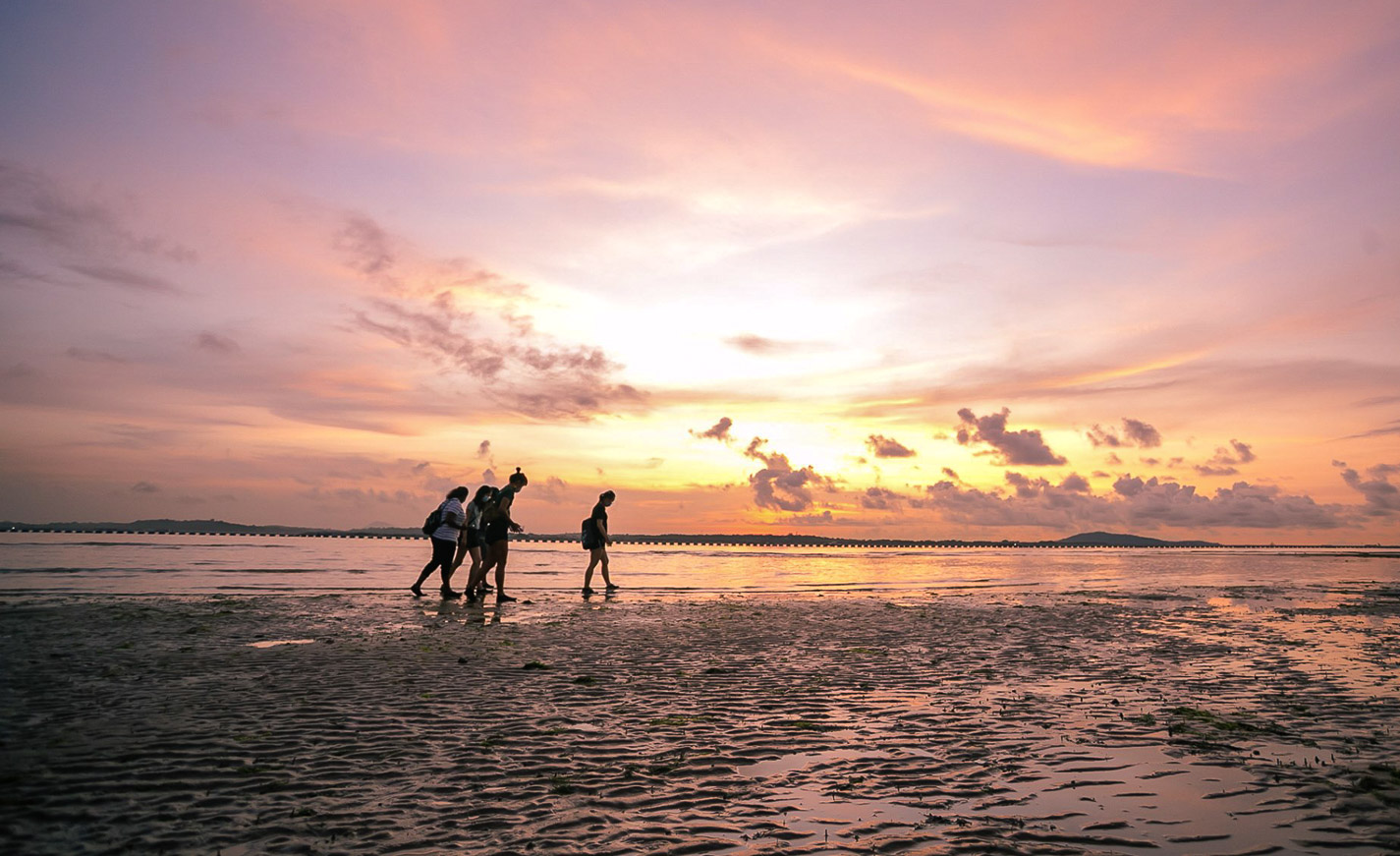
Other than having a world-class airport, what else is there in the East?
You’d probably only know Changi because our airport and Jewel mall is located here. In fact, as someone who stays in the East, these are the only two reasons why I’d ever visit this place.
But after digging a little, I’ve realised that it’s such an underrated neighbourhood.
From hidden wildlife, to learning more about Singapore’s history, here are 11 fun things to see, eat and do in the Changi neighbourhood!
1) Explore Intertidal Zones
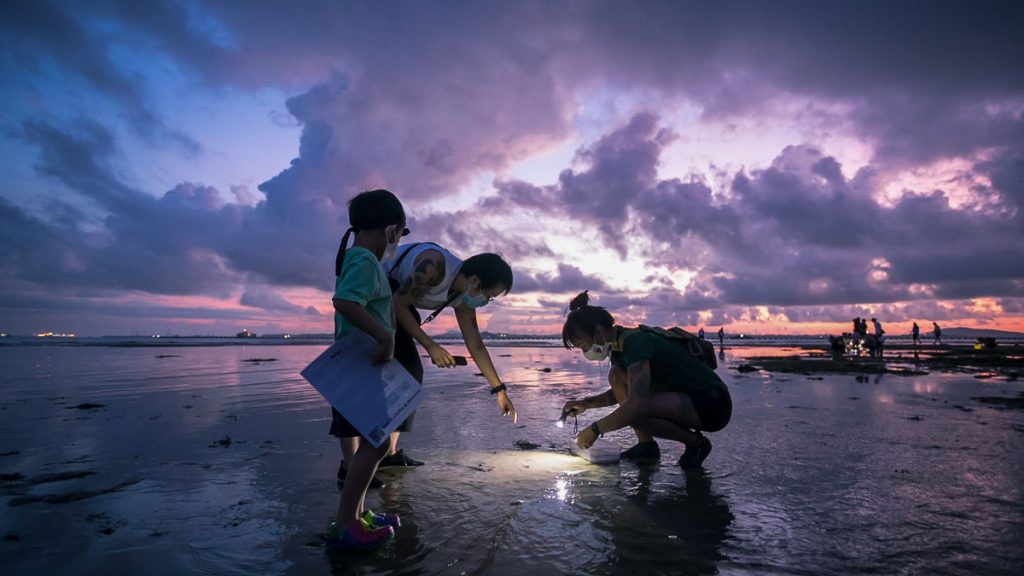
Photo credit: @untamedpathssg via Facebook
You’ll have to get up early in the morning for this but trust us, it’s worth it.
Changi Beach Park stretches from Changi Point to Changi Ferry Terminal and is a popular destination for intertidal walks. On some mornings when the tide is low, you can see various marine wildlife such as hermit crabs and sea cucumbers.
If you’d like a little more insight into the life around the intertidal zones, look out for tours like The Untamed Paths who will have expert guides point out all the cool stuff you can find!
Cost: From S$90/pax Opening hours: 24 hours ( check the low tide schedule before you go ) How to get there: From Tampines East MRT Exit B, take bus 9 and alight at Changi Beach CP 2 bus stop (16 stops)
2) Indulge in Fresh Catches
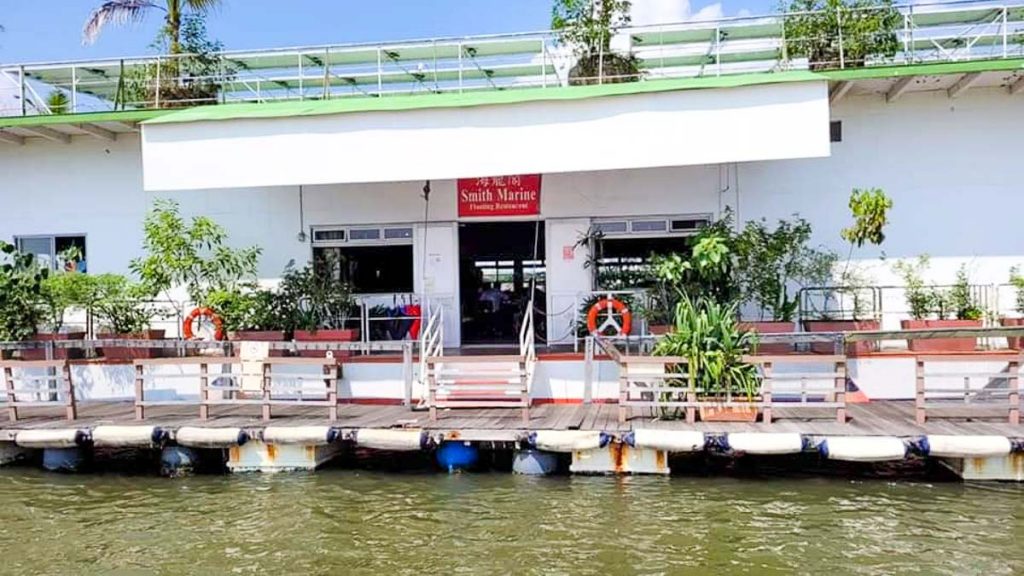
Photo credit: @smithmarine via Facebook
Get your meal caught fresh from the first floating seafood restaurant in Singapore — Smith Marine .
It’s a unique restaurant experience you can get in the East, with views overlooking Pulau Ubin and a calming sea breeze to help you forget about the busy city life.
And don’t worry, you won’t have to swim there. There’ll be a ferry to take you there and back from Changi Point Ferry Terminal, but be sure to make a reservation first.
Opening hours: 10AM – 7PM How to get there: From Tampines East MRT Exit B, take bus 59 and alight at Changi Village Ter bus stop (16 stops) — 3min walk to Changi Point Ferry Terminal
Read more: 12 Unique Restaurants in Singapore Even Non-Foodies Will Find Impressive
3) Check Out a Monster Gun
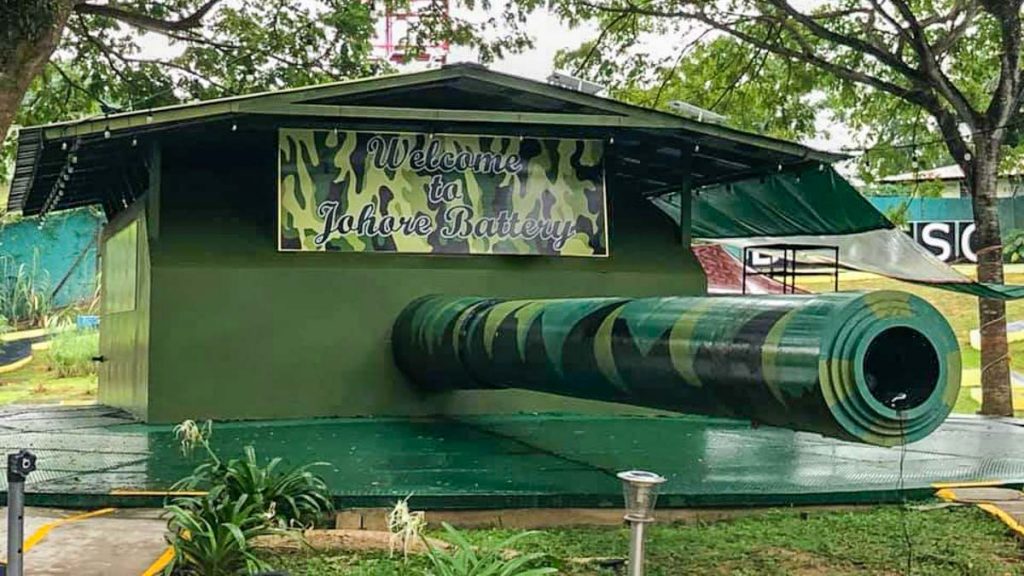
Photo credit: Dom LaVigne via Facebook
Built in the late 1930s, Johore Battery was once part of Singapore’s coastal defence system.
It consisted of three 15-inch guns, aptly named Monster Guns because of its massive size. To prevent enemies from obtaining it, it was destroyed by the British during World War II.
In 1991, the Singapore Prisons Service discovered the site and a replica of the 15-inch gun was recreated. It’s now a tourist attraction with several outdoor and indoor dining options around the area!
Entrance Fee: Free Opening hours: 24 hours How to get there: From Tampines East MRT Exit D, take bus 29 and alight at Changi Baptist Ch bus stop (7 stops) — 7min walk to Johore Battery
4) Grab a Home-brewed Beer
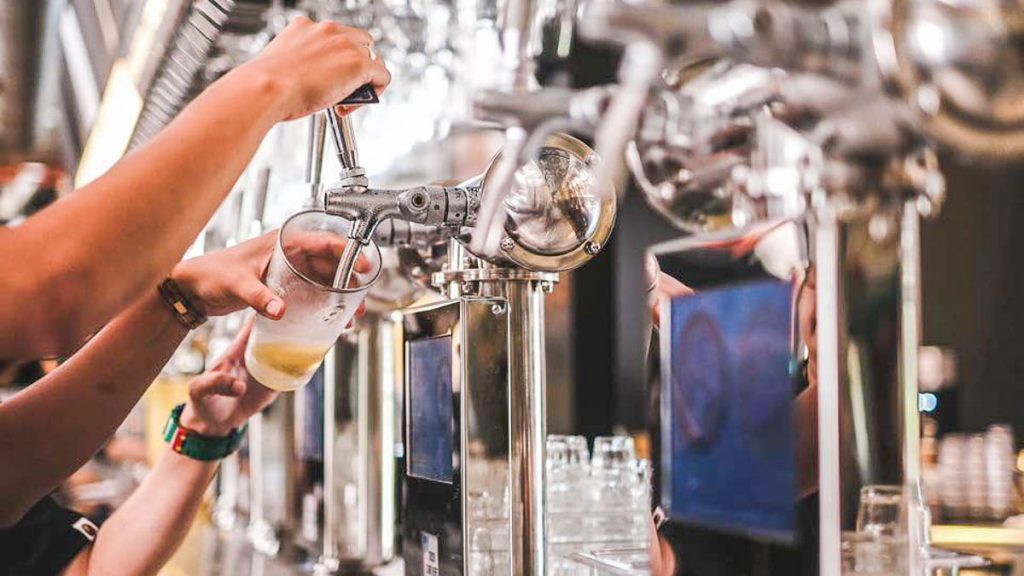
Photo credit: @littleislandbrewingco via Facebook
Famous for their locally brewed beers, Little Island Brewing Co. is a Singaporean craft microbrewery, smokehouse and restaurant.
It’s a perfect pick-me-up after jogging or cycling from the nearby Changi Beach. The restaurant’s ambience also gives off a chill vibe, with an alfresco dining area for you to enjoy a delicious meal under the starry sky.
Opening hours: 12PM – 10:30PM (Weekdays), 11AM – 10:30PM (Weekends) How to get there: From Tampines East MRT Exit D, take bus 29 and alight at Changi Village Hotel bus stop (21 stops) — 3min walk to Little Island Brewing Co.
5) Visit a Cool Navy Museum

Photo credit: I Love Museums via Facebook
Don’t let distance keep you away from this attraction, because the Republic of Singapore Navy Museum is definitely worth the long travel to the East.
This three-storey museum in Changi has both indoor and outdoor galleries, which focuses on the Navy’s capabilities and history. Some artefacts featured are components from early warships and old guns.
The museum is currently under renovation. In the meantime, you can check out a virtual tour instead!
Entrance Fee: Free Opening hours: Closed until August 2022 How to get there: From Tanah Merah MRT Exit B, take bus 35 and alight at Opp Changi Naval Base bus stop (6 stops) — 5min walk to Republic of Singapore Navy Museum
6) Try Delicious Halal Chinese Cuisine

Photo credit: @tangteahousesingapore via Facebook
Tang Tea House is known for its delicious halal-certified zi char and dim sum prepared by Shanghainese chefs, such as chicken pau , har kow and siew mai .
It also has a wide selection of seafood, meats, noodles and desserts to satisfy your hunger.
Opening hours: 11AM – 10PM How to get there: From Upper Changi MRT, take bus 2 and alight at Blk 5 bus stop (18 stops) — 3min walk to Tang Tea House
7) Plan a Weekend Getaway

Other than the Southern Islands , Pulau Ubin is another quick weekend getaway we can get in Singapore!
Catch the bumboat from Changi Point Ferry Terminal to reach the island and go on a scenic cycling adventure , kayak through mangroves or set up camp — there’s plenty of things to do on Pulau Ubin.
If you’re not sure where to start or what else there is to do, you can also check out our guide !
*Note: Due to current COVID restrictions, campsites are currently closed
Cost for bumboat: S$4/pax Operating hours: 6AM – 7PM How to get there: From Tampines East MRT Exit B, take bus 59 and alight at Changi Village Ter bus stop (16 stops) — 3min walk to Changi Point Ferry Terminal
Read more: Pulau Ubin Guide — A Local’s Guide to Exploring This Offshore Island in Singapore
8) Learn About Our WWII History
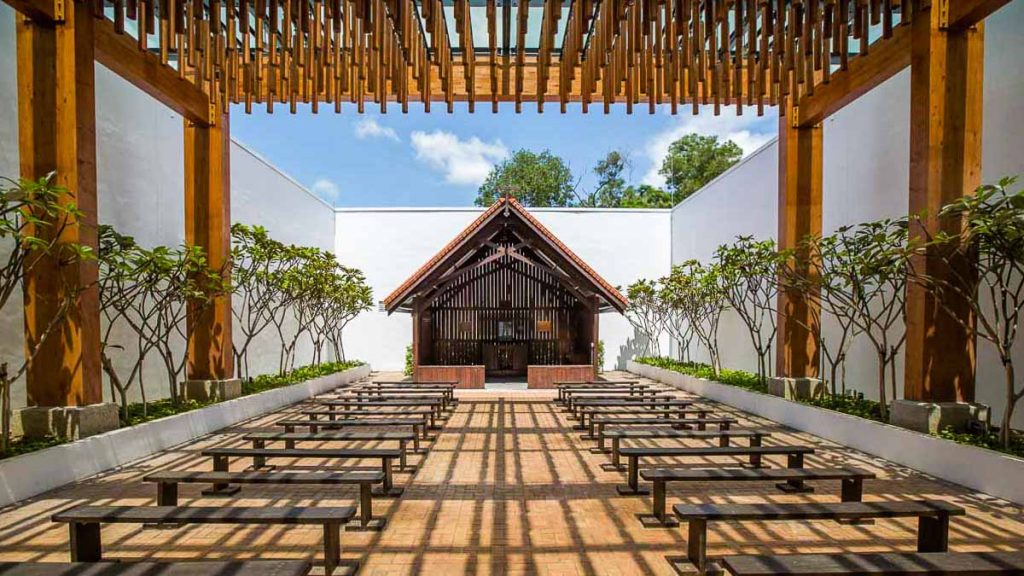
Photo credit: Changi Chapel and Museum
What better way to learn about World War II than an engaging and immersive experience at a war museum?
Featuring eight exhibition zones, Changi Chapel and Museum is dedicated to Singapore’s history during the Japanese Occupation from 1942 to 1945.
Through artifacts donated by families of the former prisoners detained in the Changi prison camp, visitors can learn about the lesser-known stories of these prisoners of war.
Entrance Fee: Free (For Singapore Citizens and Permanent Residents) Opening hours: 9:30AM – 5:30PM (Last entry at 5PM), Closed on Mon How to get there: From Upper Changi MRT, take bus 2 and alight at Opp Changi Chapel Museum bus stop (7 stops) — 5min walk to Changi Chapel and Museum
9) Feast on the East’s Best Nasi Lemak
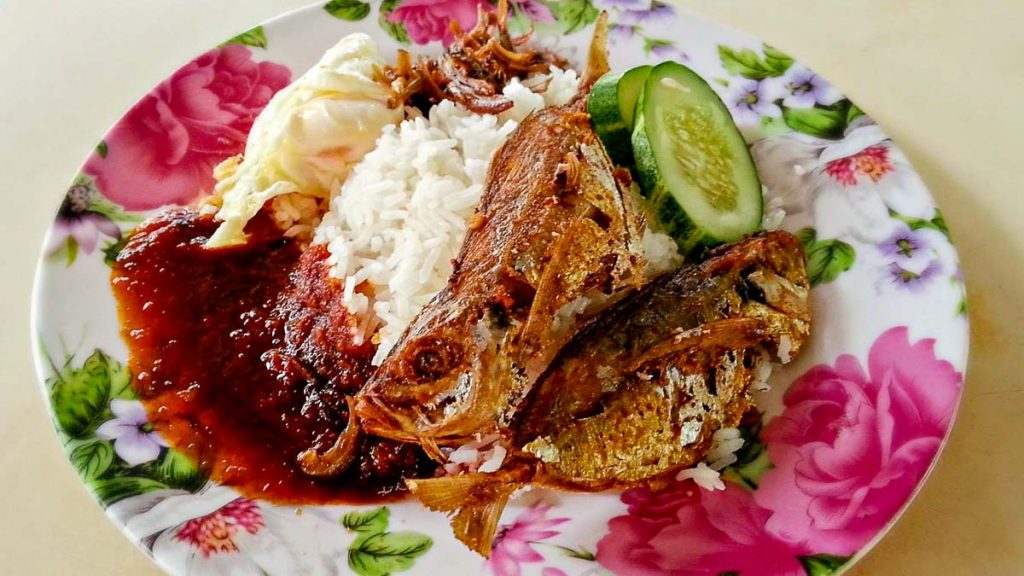
Photo credit: @hungrybird.sg via Facebook
Even if you’ve never been to Changi before, you must’ve heard of Changi Village Hawker Centre. After all, it’s a famous battleground for nasi lemak stalls.
Located right next to Changi Point Ferry Terminal, there are a couple of stalls to get this Malay dish — Mizzy Corner Nasi Lemak and International Muslim Food Stall Nasi Lemak to name a few.
Which one’s the best? Head down and decide for yourself 😉
Opening hours: 6AM – 2AM (Varies for different stalls) How to get there: From Tampines East MRT Exit B, take bus 59 and alight at Changi Village Ter bus stop (16 stops) — 2min walk to Changi Village Hawker Centre
10) Lepak at a Tranquil Beach Park
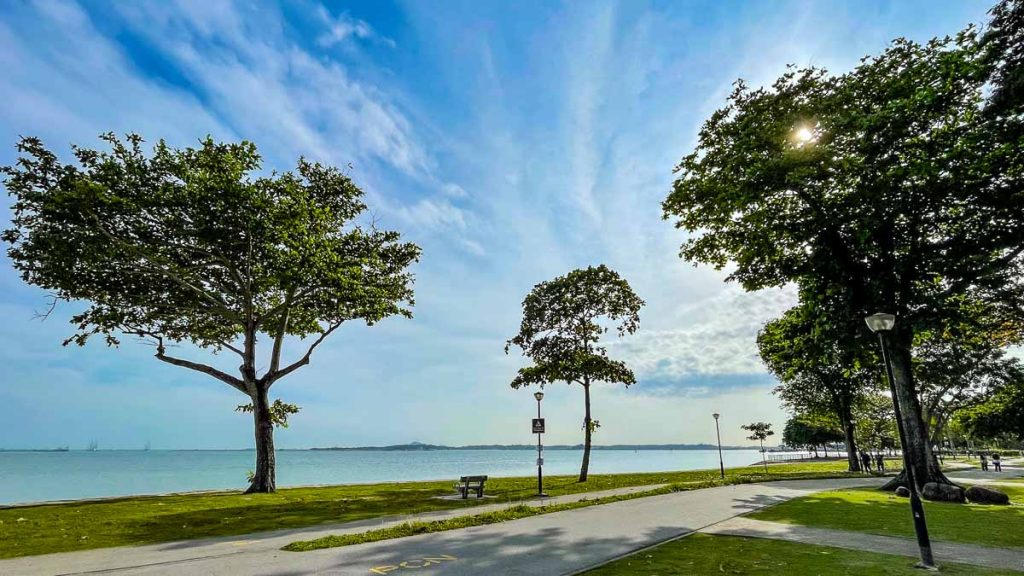
Photo credit: Martin Koh via Facebook
It’s not as popular as East Coast Park or Pasir Ris Park, but Changi Beach Park is definitely a hidden gem in the East.
This beach is one of the oldest coastal parks in Singapore and gives off a kampong vibe — without a HDB building in sight.
Home to a huge playground area and fascinating intertidal walks , it’s perfect for a relaxing and fun day out surrounded by nature.
Opening hours: 24 hours How to get there: From Tampines East MRT Exit B, take bus 9 and alight at Changi Beach CP 2 bus stop (16 stops)
11) Catch a Beautiful Sunset
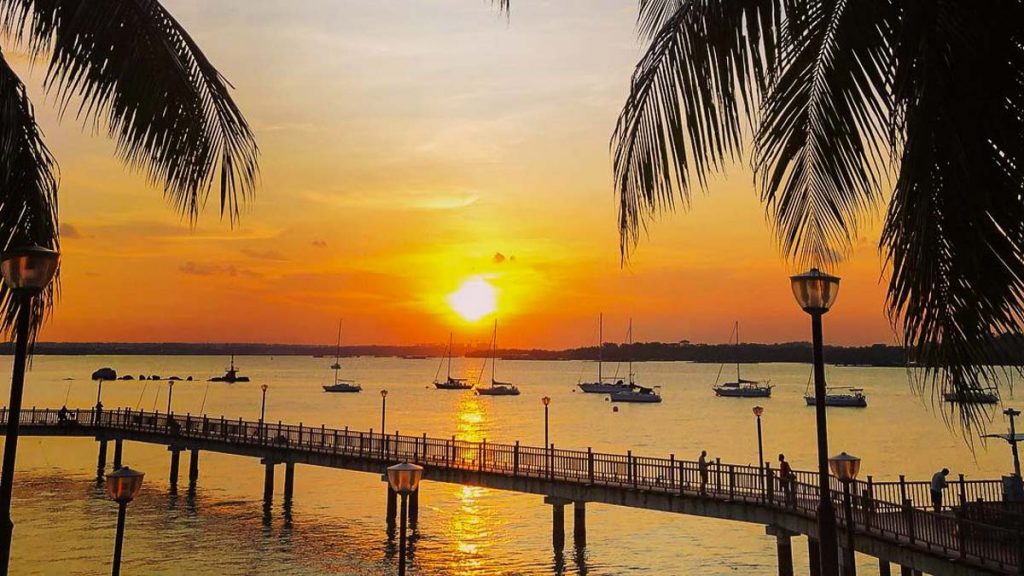
Photo credit: @kkf1953 via Instagram
End the day off by catching a beautiful sunset while strolling along Changi Point Coastal Walk.
The boardwalk spans 2.2km from Changi Creek in the east to the western rocky coast near Changi Beach Club. Along the boardwalk, there are six sections to explore — Creek Walk, Beach Walk, Sailing Point Walk, Cliff Walk, Kelong Walk and Sunset Walk.
As its name suggests, you can enjoy the best, unobstructed view of the sunset at Sunset Walk towards the end of the trail.
Operating hours: 24 hours How to get there: From Tampines East MRT Exit B, take bus 59 and alight at Blk 5 bus stop (15 stops) — 4min walk to Changi Point Coastal Walk (East entrance)
Rediscover Singapore’s Local Neighbourhoods
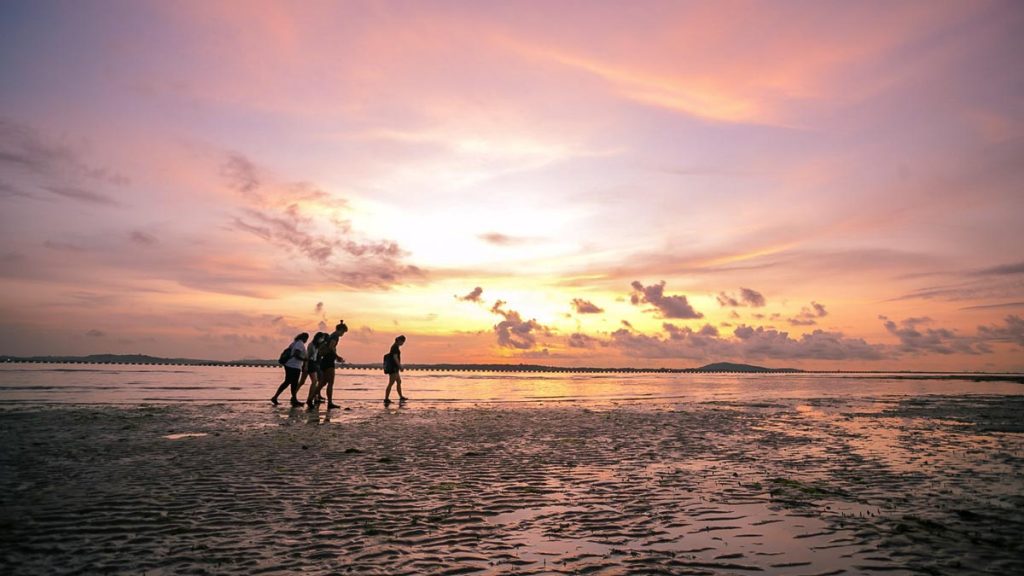
With plenty of unconventional local experiences like intertidal walks and historical sites to check out, the neighbourhood of Changi is definitely worth the travel (and not just to the airport).
If you live in the East and the next time someone asks “what’s there to do in the East?”, share this article with them!
Read more: Yishun-Sembawang Neighbourhood Guide — 9 Lesser Known things to do in the North of Singapore
Featured image credit: @untamedpathssg via Facebook
Which underrated neighbourhood in Singapore should we check out next? Let us know in the comments below!
Like what you see? Follow us on Facebook , Instagram , YouTube , and Telegram for more travel inspiration!
View this post on Instagram A post shared by thetravelintern.com 🇸🇬 (@thetravelintern)
RELATED ARTICLES MORE FROM AUTHOR

Disney Adventure Cruise Sailing from Singapore in 2025 — Everything You Need to Know
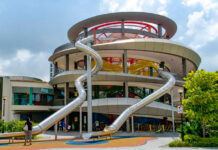
7 Chill Hangout Spots Along the New Thomson-East Coast Line to Check Out With Your Friends

35 New Deals and Attractions in Singapore this June 2024

First-timer’s Guide to Songkran in Thailand — Everything You Need to Know About Celebrating the Thai New Year
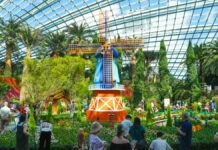
Tulipmania is Back at Gardens by the Bay from 29 April 2024
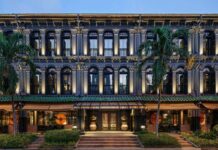
7 Boutique Hotels in Singapore For an “Out of the Country” Staycation
Leave a reply cancel reply.
Save my name, email, and website in this browser for the next time I comment.
Disney Adventure Cruise Sailing from Singapore in 2025 — Everything You...

6 Epic Road Trips in Australia for First-timers — Victoria, New...

JB Day Trip Itinerary — What to Do, Eat, and Shop...

New Flight to Sibu, Malaysia — A Lesser-Known Weekend Getaway Near...

Ultimate Guide to the Best Travel Insurance for Digital Nomads (2024)

- Terms Of Use
- Privacy Policy
The Long and Winding Road
- Life is a journey (About this blog)
- Destinations
Celebrating Singapore
A light where there was only darkness: The Changi Murals
It was an air of quiet calm that greeted me as I stepped into a room where the ghosts of a time we may otherwise have forgotten continue to haunt us. The room, bathed in the glow of light painted gold by the ochre of the walls the light reflected off, seemed to extend a warm welcome which it would have in the cold dark days when it offered hope when there might only have been despair.

The Chapel of St. Luke on the ground floor of Block 151.
The room, converted into the makeshift Chapel of St. Luke (dedicated to St. Luke the physician) during the Japanese Occupation, was where a Prisoner-of-War (POW) by the name of Stanley Warren who held the rank of Bombardier in the Royal Artillery, weakened by a severe bout of renal disorder and dysentery, drew on whatever reserves he had left in strength, to decorate, remarkably, two of the chapel’s walls with five paintings of biblical scenes from the New Testament which along with the chapel became a light in the darkness of days uncertain.

The chapel and murals were a light in the darkness of captivity for prisoners during the dark days of World War II.
The chapel which occupies a room in what was Barrack Block 151 in Roberts Barracks, which together with the neighbouring barracks and nearby Changi Prison became an extended gaol that the Japanese forces used to hold the large numbers of POWs they held. Block 151 was made part of the gaol’s hospital becoming part of a dysentery wing which included several other surrounding buildings.

Block 151 is one of a few structures from WWII which remain in the area.

Another view of Block 151.
Even if not for the weakened state of the painter, putting the paintings we now know as the ‘Changi Murals’ on the walls would have required an incredible effort. Based on information provided by the expert guide Mr. Vickna, we were told of how paints, pigments and even brushes were in extremely short supply, and they had to be procured through whatever means available – some which may have even put the men involved at risk.

A photograph of the late Stanley Warren who passed away in 1992.
There was also a huge degree of improvisation involved – the colour blue for example, was obtained from crushing chalk used on billiard cues.

A map of the POW camp sketched by Stanley Warren.
Too ill to be sent to work on the Death Railway in Siam, which he is said to have said probably saved his life, Warren found himself recuperating in a ward above the chapel in 1942, Warren and many around him drew on the comfort provided by what could be heard of the strains of Merbecke’s arrangement of the Litany being sung in the chapel.

Mr Vickna the guide.
It was hearing the voices in song throughout his slow recovery which was to serve as an inspiration for Warren who was approached by the chaplain who knew of his artistic background to decorate the makeshift chapel. He struggled through the first, The Nativity, for over two months, managing to complete it in time for Christmas in 1942. Warren was to complete four more works – the last, a mural of St. Luke in Prison, was completed in May 1943.

The Nativity was the first mural painted. On a copy painted on a wallboard in 1963, Warren painted an albatross in place of the horse’s head.
A feature of the murals is how Warren also used it depict what he did see around him – many of the faces were those of his fellow POWs and in the third mural, The Crucifixion, which I thought was the most moving, we do also see slaves dressed in loincloths in the same way the men around him were dressed in their rags. The words found above the mural “Father forgive them for they know not what they do” were we were told also a reference to his captors and the slaves crucifying Christ being the “slaves” many of his captors were to authority.

The Ascension – the second mural.
The murals were initially thought to have been destroyed – the Japanese later converted the room into a storeroom and were thought to have broken down walls as well as painting over the remaining murals. They were thought to have been discovered by Royal Air Force (RAF) personnel in 1958 and a search was made through the press in the UK for the painter – the name Stanley Warren cropping up only when a short description of the chapel and a reference to the murals was found in a book “The Churches of Captivity in Malaya”, which was discovered in the Far East Air Force Educational Library in Changi.

The Crucifixion, the third mural which was partly damaged by a doorway made in the wall – the evidence of which can still be seen.
Then an art teacher in London, Warren was invited to restore the murals, first refusing to do so on the fear of having to confront the demons of the dark days in which he executed the work. He did eventually return after much soul searching – first just before Christmas in 1963, and then again in 1982 and 1988. One of the murals does remain unrestored – the last, the lower part of which was destroyed when the wall was knocked down by the Japanese.

The Last Supper – the fourth mural.
It was one for which Warren did not have a copy of his original sketch of (which was found in the possession of a fellow prisoner later in 1985), and decided to leave what remains of in its original condition. Warren did paint a copy of it, a photograph of which can be seen below the mural in which he replaced one of the figures he orginally painted.

The unrestored upper portion of the fifth mural, St. Luke in Prison.
The Crucifixion is also one which was partly destroyed when a doorway was made in the wall – the evidence of which can still be seen.

A copy of the fifth mural which Warren painted.
Another interesting fact was one that we did learn about The Nativity mural – it was thought to have been destroyed and a copy was painted on a wallboard which was eventually removed by the RAF. The copy was one on which Warren replaced the head of the horse found on the original work with an albatross to as a symbol of flying men of the RAF which was using the barracks at the time. A part the original mural – that of the horse’s head, was found by one of the boys from the Singapore Armed Forces (SAF) Boys School (which occupied the building in the 1980s) tasked with helping Warren to restore the murals in 1982.

A view of the chapel.
The work, which is said to have offered solace and hope to the many prisoners who used the chapel, is today a reminder not just of a event we should never again want to find ourselves confronting, but also one of the triumph of the human spirit in the face of adversity. The building which houses the chapel, lies today in a restricted area within the Republic of Singapore Air Force’s (RSAF) Changi Air Base (West) and I am grateful to MINDEF’s NS Policy Department and the RSAF for the opportunity to be moved by the murals in its original setting. A copy of the murals to which members of the public have access to, can be found in the Changi Museum .

The chapel offered hope where there seemed to have been none.

Mr Vickna speaking about The Ascension.

The corridor outside the chapel.
Information on Stanley Warren and the Changi Murals
- Infopedia on the Changi Murals
- Infopedia on Stanley Warren
- Detailed information on the Changi Murals
The Royal Anglian & Royal Lincolnshire Regimental Association *
- Australian War Memorial Site on the Changi Murals
* with photographs of it in the condition it when it was originally uncovered
Share this:
- Click to email a link to a friend (Opens in new window)
- Click to share on Facebook (Opens in new window)
- Click to share on Twitter (Opens in new window)
- Click to share on Reddit (Opens in new window)
- Click to share on Tumblr (Opens in new window)
- Click to share on LinkedIn (Opens in new window)
- Click to share on WhatsApp (Opens in new window)
« The lost waterfront Now you can get yourself printed in 3D »
Information
- Author : Jerome Lim, The Wondering Wanderer
- Date : 20 September 2013
- Tags: 1942 , 1943 , Block 151 , Bombardier Stanley Warren , Changi , Changi Air Base (West) , Changi Gaol , Changi Gaol Hospital , Chapel of St. Luke , Dysentery Wing , History , Japanese Occupation , Military Heritage , Military History , Photographs , Photography , Prisoners of War , Roberts Barracks , Royal Air Force , Royal Artillery , Second World War , Singapore , St. Luke in Prison , St. Luke's Chapel , Stanley Warren , The Ascension , The Changi Murals , The Crucifixion , The Last Supper , The Nativity , World War II
- Categories : Changi & Somapah , Conservation , Forgotten Buildings , Forgotten Places , Heritage Sites , Heritage Trails , Military Sites , Reminders of Yesterday , Singapore , World War II Sites
6 responses
[…] Blog at the Singapore Blog Awards in the past two years. He wrote a sombre account of his visit in A light where there was only darkness: The Changi Murals. Jerome kindly shares the precious Changi Murals images he took in my […]
It will be nice to be able to view the paintings. I frequently hear from my dad that he slept in the exact same room during his days serving the British Royal Air force. It was rumored to be haunted and the British soldiers dare not sleep in there. Nice write up.
In April 1973, I was a recruit in Platoon 3, Alpha Company, !st SBMT. My comrades and I were not aware that we were staying in such a famous block. One day, our platoon commander, before our passing out parade, Lta Hamid brought us into the room which was always locked and introduced us to the Changi Murals. It was so beautiful and also show the spirit of the POWs that endure the sufferings of WW II. This moment is deeply engraved in my mind.
Thank you so very much for this article and superb photography that bring to life such a time as this.
Thank you so much for a brilliant write up and letting us see the murals in their original setting. My husband was stationed their for two years in the early seventies and often spoke of them, lovely to see them. His uncle was a POW there and never coped with life after, lovely man and such a shame. Senseless brutality to such beautiful people!! Heartbreaking xx
I lived for years in block 151 in the early 50’s and really appreciated the murals
Leave a comment Cancel reply
This site uses Akismet to reduce spam. Learn how your comment data is processed .
Use of Content
Connections.
Photographing Singapore

Walking Tours & Tour Curation

I am also a Singapore Tourism Board licensed tourist guide. I have curated and conducted customised tours, which include the Victoria Clock Tower Climb and a series of four historical tours for Design Orchard's The Non Season . Please drop me an email to find out more, or should you be interested in a personalised walking tour.

A Sporting Journ ey 17 Sep 2023, 9 to 11 am

Discovering Singapore's Best Kept Secrets 2023 #1 Fiji Road 16 Sep 2023, 1.15 pm (SOLD OUT)

#2 5 Kadayanallur Street 24 Sep 2023, 10.15 am (Available from 16 Sep 2023 at 8pm)

On OGS, The Rail Corridor

Have you got a copy?
“Every history buff of Singapore should get a copy of this book” – Professor Tommy Koh
Featuring 160 ‘secret’ spots in Singapore, Secret Singapore is a guide on which I had the pleasure of working on with Heidi Sarna.
Secret Singapore was among the best selling non-fiction titles in Singapore following its launch in 2020 – not bad for a travel guide!
If you are in Singapore, you may purchase them directly from me .

- 5,989,717 hits
Enter your email address to subscribe to this blog and receive notifications of new posts by email.
Email Address:
Sign me up!
Virtual AirBnB Experiences
Discover hidden sides of Singapore — virtually!
What’s on
Hidden in Plain Sight (Virtual Tours)
For more information, please click on the photos:

- Airbnb Experiences and the Singapore Tourism Board Launch Partnership to Support International Tourism Recovery (STB)
- Partnering with the Singapore Tourism Board to Promote Tourism Recovery (Airbnb)
- Bringing Singapore to foreigners through virtual tours and experiences amid Covid-19 (Straits Times)
- STB and Airbnb join hands to promote local virtual experiences globally (Straits Times)
- How Singapore is reimagining the future of travel (Conde Nast Traveler)
In the news

Travel Photography
Fly me to the Moon

Spain’s most beautiful town!

Ancient walls of Dubrovnik

Between a rock and a hard place
Men’s Folio Nov 2013

Discovering Singapore
More on the series:

My Shanghai Story

A weekend's adventure in exciting Shanghai thanks to Spring Airlines , which now flies from Singapore to Shanghai Pudong.
The Arrival of Spring

Chill-out Places

Cool Green Spaces

Shanghai on Sale

Global Community Day
Temasek Polytechnic Global Community Day Colonial Changi – a virtual tour [plus Old Changi Hospital] (9 – 15 Nov 2020)
Take a virtual tour to explore a hidden side of Changi from 9 to 15 Nov 2020 (public tours on 15 Nov 2020).
Sign up at: Global Community Day 2020 (Colonial Changi)

A trip to paradise on earth

Together with 9 other bloggers and thanks to Tigerair Philippines and the Philippine Department of Tourism, I found myself on a dream trip to Boracay in July 2013. Read about the fantastic experience I had at Boracay Island Escapade or on my blog .

Getting there and fav spots .
A guide to the Beaches .

How best to get wet!

High and mostly dry activities .

Finding a slice of Heaven in Heaven .

Heavenly stays in Boracay .

Autumn in Kansai and other adventures in Japan

The Feast of Our Lady of Fatima

The Drunken Dragon Festival

Lou Lim Ieoc Garden

The Charms of Sleepy Coloane

Festive Coloane

Hac Sa Beach

My Melbourne Experience
An adventure in springtime Melbourne courtesy of Tourism Victoria , Jetstar and omy.sg with nine other bloggers. My set of experiences can be found on this site .
Courtesy of the Hong Kong Tourism Board (HKTB) , I had the opportunity to have a 4 day adventure in Hong Kong with 9 other bloggers. To read our collective Hong Kong Travel Blog entries, please click on the icon below:

Not your typical Singapore

Painted Faces

Singapore's Lost Elegance

The SG of My Younger Days

Unmanicured Spaces
The Magical Watery Woods

'Junk' Island

The Submerged Reefs of Singapore

The Lost World

Upper Peirce Reservoir Park

Places of Mystery
The Royal Cemetery at Bukit Kasita

The Royal Cemetery at Kg Gelam

The Voices of a Forgotten Past

Haunting Spaces
The Chapel of St. Luke (Changi Murals)

- Already have a WordPress.com account? Log in now.
- Subscribe Subscribed
- Copy shortlink
- Report this content
- View post in Reader
- Manage subscriptions
- Collapse this bar

IMAGES
VIDEO
COMMENTS
You will get off 7 stops later at Opposite Changi Chapel Museum stop (97201) and cross the road to reach the museum. Changi Chapel and Museum tells the story of the prisoners of war and civilians interned in Changi prison camp during the Japanese Occupation. The museum was revamped and opened in May 2021, featuring new content and artefacts.
Changi Chapel and Museum officially reopens on May 19 with new content and artefacts, as well as free admission from May 19 to 30. ... a curator's highlights tour of the museum, and a tribute to ...
The newly revamped Changi Chapel and Museum reopened in May 2021, and commemorates the prisoners of war (POWs) and civilians interned in Singapore's Changi prison camp from 1942 to 1945. The World War Two interpretative site is managed by the National Museum of Singapore. Featuring essays and key insights from the exhibition's curators ...
Changi Chapel and Museum tells the story of the prisoners of war and civilians interned in Changi prison camp during the Japanese Occupation. The museum was revamped and opened in May 2021, featuring new content and artefacts. It is managed by the National Museum of Singapore, a National Heritage Board institution.
The Changi Chapel and Museum sheds light on this tumultuous era, and the events that occurred in Singapore from 1942 to 1945, during the Japanese Occupation. ... The latter will also grant access to audio tours and virtual guides to World War II sites in the vicinity. Before leaving, be sure to peruse the merchandise at the MUSEUM LABEL store ...
Join us in a livestreamed tour from the comfort of your homes! Hear from Ms Rachel Eng, Assistant Curator at the National Museum of Singapore, as she...
New Changi Chapel & Museum - Expanded Showcase Of War Histories & Lived Experiences ... visitors are encouraged to access the CCM chatbot for audio tours, exhibit captions in the four national languages and Japanese, and even virtual visits to nearby World War Two-related sites. The chatbot will be available on 17 May from 12 noon. From 19 ...
The future is here! Go on a tour of the Changi Chapel and Museum with Temi the robot guide, developed in partnership with GovTech (Government Technology Agency of Singapore).Gain fresh insights into the lives of internees in Changi Prison Camp during the Japanese Occupation.
<iframe src="https://www.googletagmanager.com/ns.html?id=GTM-N8SL6R5" height="0" width="0" style="display:none;visibility:hidden"></iframe>
Touring Changi Chapel and Museum, SingaporeWith Liz CowardPart of Singapore in WWII on WW2TVhttps://youtube.com/playlist?list=PLDG3XyxGI5lBQhjohjRZKUUQhgZfvz...
Image credit: Changi Chapel and Museum The topic of WWII can be quite heavy, even for adults, so those with children might want to book the Temi tours instead. Temi is an interactive robot who roleplays as a soldier internee and will accompany you on your visit through the museum. Temi-Guided Tours Tour timings: Tue-Thu 10am-4pm | Fri 12pm-4pm ...
One such landmark is Changi Chapel and Museum, tucked away in the far east of Changi. Newly revamped in May 2021, there are 8 galleries within that document the area's early beginnings, and taking visitors through the war era through videos and interactive screens. ... Virtual And School Tours School Open House, Virtual And School Tours. 2024 ...
Temi Guided Tours. Learn more about Changi Chapel and Museum with an interactive robot by your side. Explore the museum through the eyes of a soldier who was interned at the Changi prison camp during the Japanese Occupation. Tour timings: Tuesday to Thursday: 10 to 4pm (every hour), last tour at 4pm Friday: 12 to 4pm (every hour), last tour at 4pm
Closed now. 9:30 AM - 5:30 PM. Write a review. About. The newly revamped Changi Chapel and Museum (CCM) features new content and artefacts presented in an intimate and engaging format to tell the story of the prisoners of war and civilians interned in Changi prison camp during the Japanese Occupation. As part of the revamp, the National Museum ...
Meet Temi - your friendly museum guide who happens to be a robot. 26 AUG 2022. Mention museums and you'll usually think of history, artifacts, and antiques. But head down to Changi Chapel and Museum, and you'll get a dose of cutting-edge technology. There, one of the museum guides moves around on wheels and welcomes you with audio and ...
Experience Chek Jawa's rich plant and marine life along the 1.1 km boardwalk that runs along the coast and mangrove area. A 21-metre tall viewing tower lets you observe birdlife, including the Collared Kingfisher and Straw-headed Bulbul. To book a guided tour: please contact Changi Front Office - [email protected]*.
The newly revamped Changi Chapel and Museum (CCM) features new content and artefacts presented in an intimate and engaging format to tell the story of the prisoners of war and civilians interned in Changi prison camp during the Japanese Occupation. ... We did a half day Changi Museum and Chapel tour. Photos (Optional) Read more. Written ...
The idea of a Changi Chapel museum began in 1953 at the Changi Prison, where one of its hospital wards was converted into a chapel. But as the visits to the chapel grew, it caused inconvenience to the prison's operations. Hence, in 1988, Singapore decided to build a replica chapel next to the Changi Prison, where a small museum was also set up.
Colonial Changi - a virtual tour [plus Old Changi Hospital] (9 - 15 Nov 2020) Take a virtual tour to explore a hidden side of Changi from 9 to 15 Nov 2020 (public tours on 15 Nov 2020). ... The Chapel of St. Luke (Changi Murals) On Flickr. More Photos Create a free website or blog at WordPress.com.
Curator Tour: Livestream. Join us for a livestreamed tour from the comfort of your homes! Hear from Ms. Rachel Eng, Assistant Curator at the National Museum of Singapore, as she shares her experiences of putting the exhibition together. Learn about the experiences of prisoners of war and internees who were imprisoned at Changi during the ...
In the meantime, you can check out a virtual tour instead! Entrance Fee: Free Opening hours: ... How to get there: From Upper Changi MRT, take bus 2 and alight at Opp Changi Chapel Museum bus stop (7 stops) — 5min walk to Changi Chapel and Museum. 9) Feast on the East's Best Nasi Lemak.
The chapel which occupies a room in what was Barrack Block 151 in Roberts Barracks, which together with the neighbouring barracks and nearby Changi Prison became an extended gaol that the Japanese forces used to hold the large numbers of POWs they held. ... Colonial Changi - a virtual tour [plus Old Changi Hospital] (9 - 15 Nov 2020) Take a ...
9:30 AM - 5:30 PM. Write a review. About. The newly revamped Changi Chapel and Museum (CCM) features new content and artefacts presented in an intimate and engaging format to tell the story of the prisoners of war and civilians interned in Changi prison camp during the Japanese Occupation. As part of the revamp, the National Museum of Singapore ...